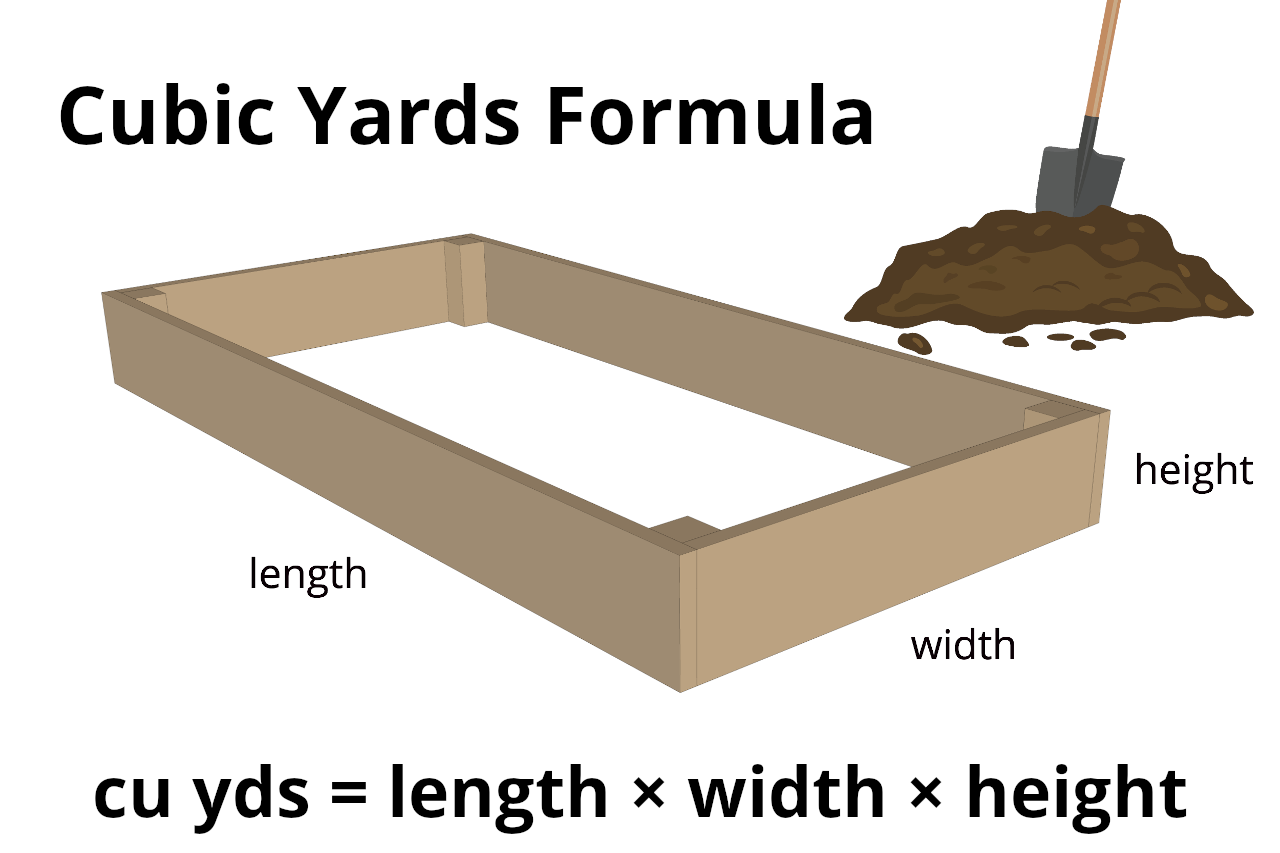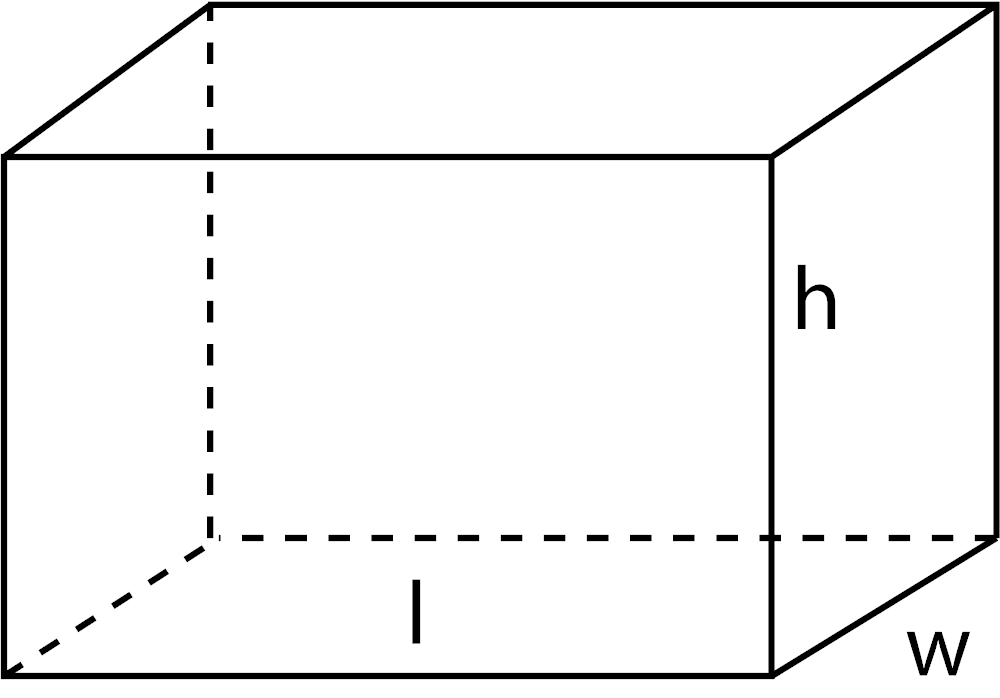Cubic Yard Calculator
Enter the length, width, and depth, or area and depth of the space below to calculate volume in cubic yards. Estimate the price of the material by including the price per cubic yard.
Result in Cubic Yards:
Estimated Total Price
On this page:
If you’re measuring for landscaping material, be sure to check out our gravel, soil, mulch, and concrete calculators.
How to Calculate Cubic Yards
A cubic yard is the volume of a space equivalent to a cube with a length, width, and height of one yard. You’ll commonly see them abbreviated as cu yd or yd³.
There are a few easy ways to calculate cubic yards.
The first way to calculate the cubic yardage of any volume is to use the calculator above. It’s especially useful for construction and landscaping projects such as concrete, landscape material, fill, dirt, gravel, or containers.
You can also use one of the formulas below to calculate it yourself.
Cubic Yards Formula
To calculate cubic yards, multiply the width times the length times the height. Ensure that all dimensions are measured in yards.
cu yd = Lyd × Wyd × Hyd
If your measurements are in feet, the resulting volume will be in cubic feet, and if they are in inches, then the result will be in cubic inches.

To find the cubic yardage of a volume when the dimensions are measured in inches or another unit of measure, first convert all measurements to yards, then perform the multiplication.
Cubic Yards Formula Using Dimensions in Feet
Another way to find cubic yards is to take all measurements to feet, then multiply to find the volume in cubic feet, and finally divide the result by 27 to get the volume in cubic yards.
cu yd = Lft × Wft × Hft / 27
The steps to find cubic yards using this method are:
- Measure the width, length, and height of the space in feet. If measurements are in inches, then be sure to convert to feet.
- If the volume is a complex shape, it may be simplest to break it up into manageable parts and calculate the volume of each part separately. For instance, you can break up a complicated flower bed into several geometric areas, and then find the cubic yardage of each of those areas first, and finally add them all together.
- If the volume is rectangular or cubic in shape, multiply the length times the width times the height in feet (l × w × h) to get the volume in cubic feet.
- Finally, convert the cubic feet measurement to cubic yards by dividing the result by 27, since cubic yards are equal to cubic feet ÷ 27. When in doubt, use a conversion calculator for this step.
For example, let’s calculate the cubic yards for a space that is 12 ft long by 14 ft wide by 9 inches deep.
Since we already know the space’s dimensions, the next step is to convert all measurements to feet. Note that the depth measurement is in inches.
depth = 9 inches ÷ 12
depth = 0.75 feet
Next, calculate the volume in cubic feet.
cu ft = 12 ft × 14 ft × 0.75 ft
cu ft = 126 cu ft
Finally, convert the volume in cubic feet to cubic yards.
cu yds = 126 cu ft ÷ 27
cu yds = 4.67 cu yds
If you are calculating yardage for a concrete or landscaping project, understand that suppliers may not sell fractions of a yard of material. You may need to round up to the nearest yard and order that amount.
It is always worthwhile to ask your supplier if they will sell a partial yard of material to both save money and prevent waste.
To estimate the cost of materials, simply multiply the cubic yardage found above by the price per yard.
How Much is a Cubic Yard?
You’ve seen how to calculate them, but you still might be wondering just how much is a cubic yard?
One cubic yard is equivalent to a space that is one yard wide, one yard long, and one yard deep. The table below shows the size of the space equal to one cubic yard in other units.
| 1 cu yd = | 1 yd x 1 yd x 1 yd |
|---|---|
| 1 cu yd = | 3 ft x 3 ft x 3 ft |
| 1 cu yd = | 36 in x 36 in x 36 in |
| 1 cu yd = | 0.9144 m x 0.9144 m x 0.9144 m |
| 1 cu yd = | 91.44 cm x 91.44 cm x 91.44 cm |
Cubic Yards Volume Formulas
The formula for calculating volume in cubic yards is different for various shapes. Refer to the shapes below for the appropriate volume formula.

Rectangular/Cubic Formula
Calculate the volume in cubic yards of a rectangular cuboid using the formula w × l × h.
yds3 = length × width × height

Round or Cylinder Formula
Calculate the volume in cubic yards of a cylinder using the formula πr2h, where r is the radius of the cylinder’s base and h is its height. If you know the diameter of the cylinder’s base instead of its radius, you can divide it in half to get the radius.
yds3 = π × (diameter ÷ 2)2 × height
yds3 = π × r2 × h
π = 3.14159265359
To estimate the volume of more shapes, try out our volume calculator.
Frequently Asked Questions
How many feet are in a cubic yard?
There are 27 cubic feet in a cubic yard.
How many cubic yards fit in the bed of a truck?
This is variable depending on what kind of truck, but the volume of a 2022 Toyota Tacoma 6-foot truck bed is only 1.252 cubic yards. A cubic yard is probably bigger than you think, so be sure to check the size of your bed before you head to the landscape supplier!
How much area does a cubic yard cover?
This is dependent upon the dimensions of the area you are trying to cover. For example, a cubic yard of material covers an area of 1 square yard with 1 yard deep of material, but an area that is 2 yards by 3 yards will only be covered by 0.167 yards, or 6 inches of depth.
But, there are some rules of thumb you can follow. You can cover the following with 1 cubic yard of material:
- 10′ x 16′ x 2″ depth
- 9′ x 12′ x 3″ depth
- 9′ x 9′ x 4″ depth
- 7′ x 9′ x 5″ depth
- 6′ x 9′ x 6″ depth


